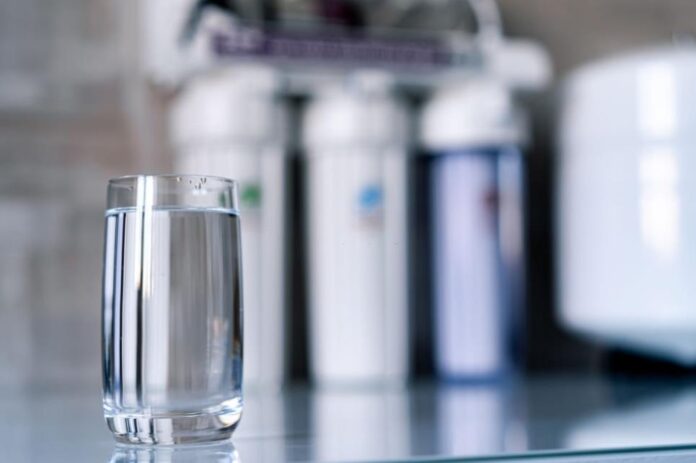Reverse osmosis is the process that removes the contaminants and chemicals from unfiltered or dirty water. It does the job by passing the water through a semipermeable membrane. The water is forced to flow from a higher concentrated side (higher number of contaminants) of the membrane to a lower concentrated side (lower number of contaminants). This gives us clean and pure water to drink. The freshly produced water is called permeate. The side where all the contaminant is left is called waste or brine.
The semipermeable membrane consists of small pores that let the water molecules pass through but block all the contaminants. As in osmosis, the water flows from a lower concentration to a higher concentration, from one side of the membrane to the other. This is done to get or achieve the equilibrium between both sides.
However, in reverse osmosis, the contaminants are prevented from entering and only the water is allowed to pass through. If you are filtering well pump water through reverse osmosis, then all the salt will be left behind and we would get clean water to drink.
How Does Reverse Osmosis Work?
To thoroughly understand the process of reverse osmosis, first, you need to understand how osmosis works. You must have read about in school or college, that in osmosis the water molecules pass from a membrane and they go from a less concentrated area to a higher concentrated area. In simple words, the pure water flows and mixes with all the containments. That is not something that we would like to drink.
In reverse osmosis, as the name suggests, the osmosis process is reversed and the water is forced to flow in the opposite direction.
Osmosis diagram
In the reverse osmosis process, the pressure applied to overcome the osmotic pressure and we push the water from a higher concentration of chemicals and contaminants to a lower concentration of containments. This shows that the water is being processed in reverse.
The contaminated water is transforming into pure water. In the system, the contaminated water needs to pass through a certain number of filters in order to become clean and safe. When the contaminated water passes through the filters, all the contaminants get trapped in the filters. Due to which we are only then left with pure and clean water.
Reverse Osmosis filtration diagram
The reverse osmosis process includes 4 stages of filtration.
- A sediment filter
- Pre-carbon block
- Reverse osmosis membrane
- Post carbon filter
The sediment filter is responsible for removing the biggest particles like sand, dirt, and rust. This helps to prevent the clogging of subsequent filters. The pre-carbon filter (the second filter) will use activated carbon to block any particle that is a little bigger than a speck of flour. It is also used to attract and bond positively charged ions. This will prevent chemicals like chloramines and chlorine from entering the system. The job of the reverse osmosis filter is to remove any molecules that are heavier than water, like sodium, fluoride or any dissolved minerals. In the end, the post-carbon filter polishes and further filters the water.
Check out: What Are C Wire for Thermostats?

